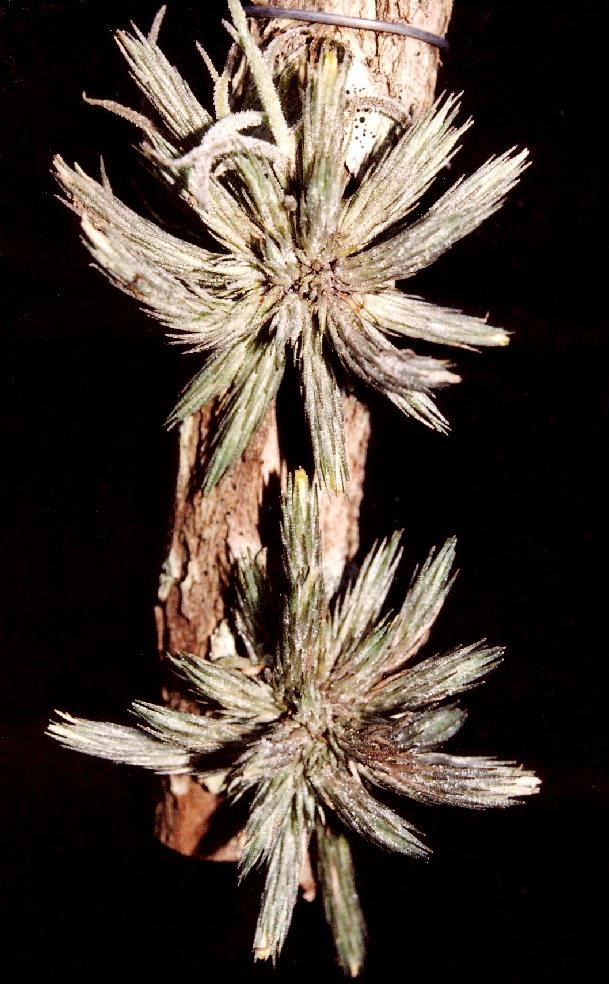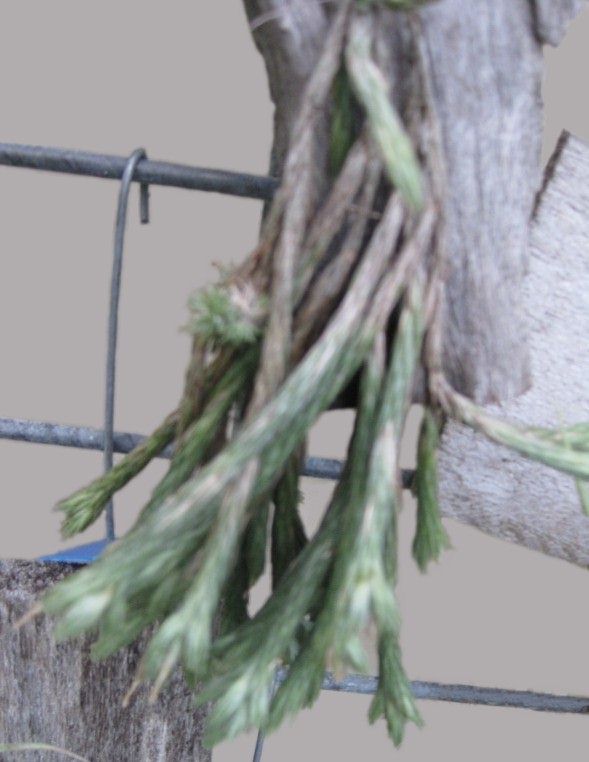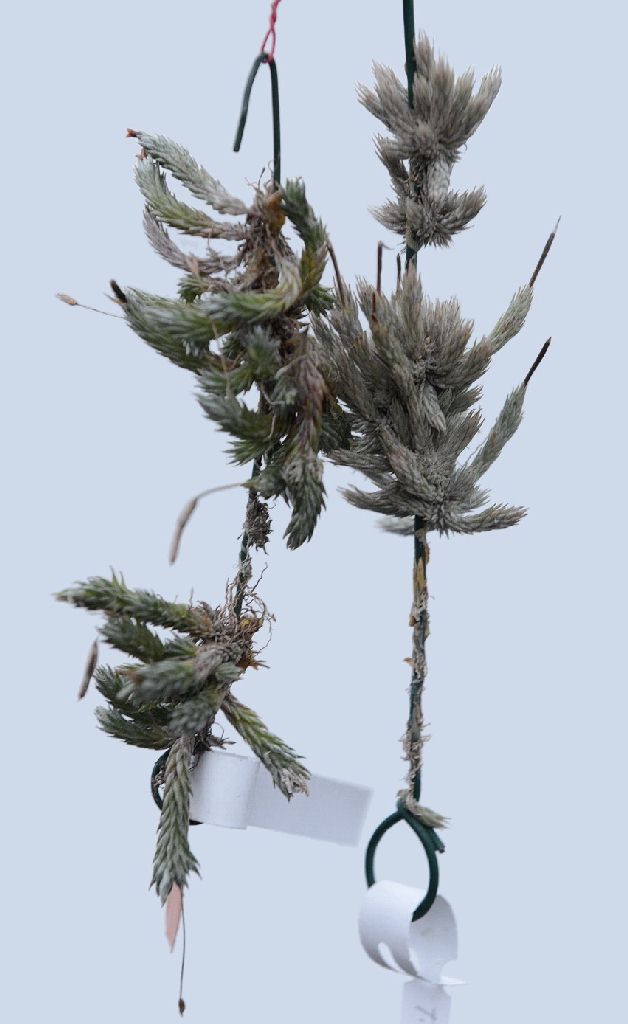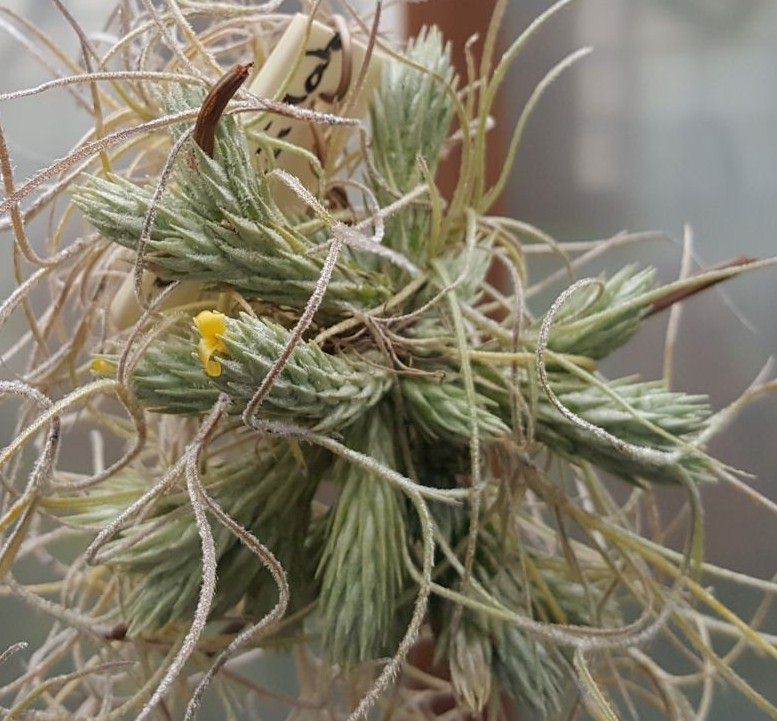


Was called Tillandsia bryoides. Note from Derek Butcher 22/12/11.
"HOT OFF THE PRESS
Many of you grow T. bryoides. Some may have wondered why this is referred to as T. bryoides auct. Now auct means according to the author and I often wondered who the author was because usually we see the name of the person who described the plant with the plant name. Whenever you see auct you realise that the plant name is a problem.
WELL, the problem has now been solved and the plant is now called T. minutiflora Donadio.
Walter Till was involved with the name change so there should not be any immediate challenge to the new name. I rather liked 'Bryoides' if only because of the way it drips off your tongue but alas you will have to change your labels. A 4 page explanation will be part of the next DVD so you can brag to non Tillnuts about the reason for the change of name."
* Peter Tristram 26/05/14 pedicellata (on the left) with the flower stems and minutiflora without - some seed pods on both though, so the base of the pod is the end of the flower stem. This is a small form of minutiflora. Most of the world still calls this little beauty bryoides even most of the Europeans! It's look-a-like, pedicellata, still keeps its name but has a short flower spike and minutiflora doesn't.

| Stems, length | |||
| Branches, diameter (leaves included) | |||
| Leaves (fresh) | |||
| Leaf blade, position | |||
| Sheath, nervation | |||
| Inflorescence, number of flowers | |||
| Inflorescence, peduncle at anthesis | |||
| Inflorescence, peduncle at fruit ripening | |||
| Bracts (peduncle and flowers), nervation | |||
| Bracts (peduncle) differentiation respect to the leaves | |||
| Bracts (peduncle), number | |||
| Bracts (peduncle at fruit ripening), arrangement | |||
| Bracts (peduncle), pubescence | |||
| Bract (flower), relative length | |||
| Bract (flower), apex | |||
| Bract (flower), pubescence | |||
| Sepals, nervation | |||
| Sepals, pubescence | |||
| Flower, colour |